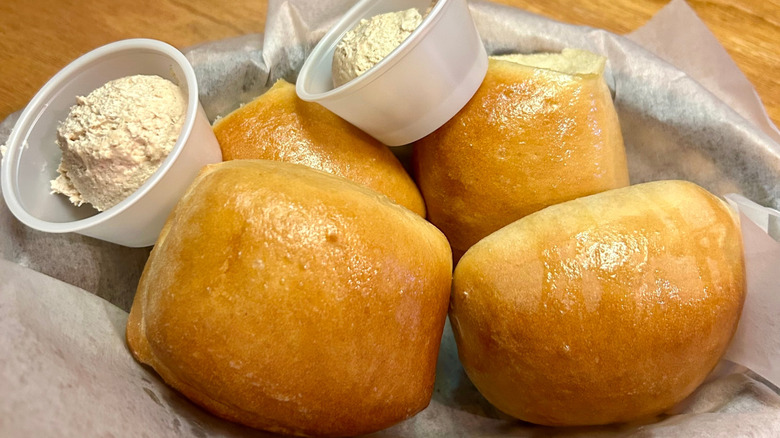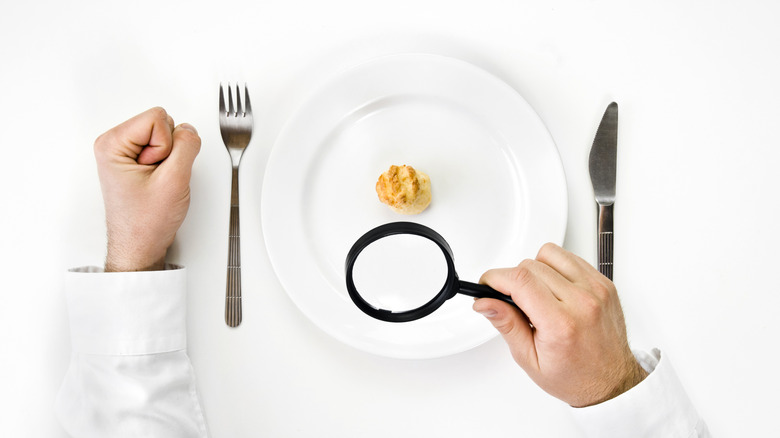Have Texas Roadhouse Rolls Gotten Smaller?
Texas Roadhouse is known for serving up succulent steak and other meats, but the restaurant's rolls might be equally, if not more, popular. In fact, the chain is so beloved that people take advantage of the secret ordering process for its frozen rolls during the holidays. In June, the chain began selling a miniature version of them in select Walmart stores in Kentucky, Indiana, and Ohio. However, the social media rumor mill is in full swing with posts claiming that the fresh rolls being served at the restaurant for dining in or for takeout have been downsized, too. But is there any truth to that claim?
Texas Roadhouse hangs its proverbial hat on the fact that all of its food is homemade, including the rolls which are baked in-house every five minutes. This commitment to fresh rolls could be the reason why some are smaller than others.
As a few commenters on social media pointed out, including a few who currently work at Texas Roadhouse or have in the past, the size of the rolls may differ depending on the amount of time they're given to rise. If the kitchen is in the weeds, there's a new baker, or there is an especially high demand for the popular rolls, it's certainly possible that they weren't given the exact amount of time necessary to rise as they might otherwise.
Shrinkflation is real
While the rolls at Texas Roadhouse may not be intentionally smaller, it's fair that consumers would raise eyebrows — shrinkflation has definitely been an issue elsewhere. Companies charging the same price for less product has been an ongoing problem at both grocery stores and restaurants for years.
At supermarkets, buyers have found that foods that range from coffee, yogurt, and soup to chips and ice cream are being sold in a smaller quantity while the price remains the same. In restaurants, shrinkflation has manifested in a couple of ways. For some, portion sizes have decreased. Meanwhile, others have tried to mask the tactic by swapping out high-quality ingredients for their lower quality counterparts.
Fortunately, there are a few ways to tell if your favorite restaurant or snack-maker is trying to dupe you into thinking that you're getting the same value that you always have. The most obvious is that your food simply doesn't taste the same. But beyond that, keep an eye out for packaging changes — packages may be slightly smaller, redesigned, or even labeled as "limited edition." Also look at changes in the bottoms of jars — if your peanut butter or marinara sauce was previously closer to flat on the bottom and is now concave, you might be getting less. Finally, always keep an eye on the unit price and net weight of your favorite products — if either shifts significantly, you could be looking at shrinkflation.


